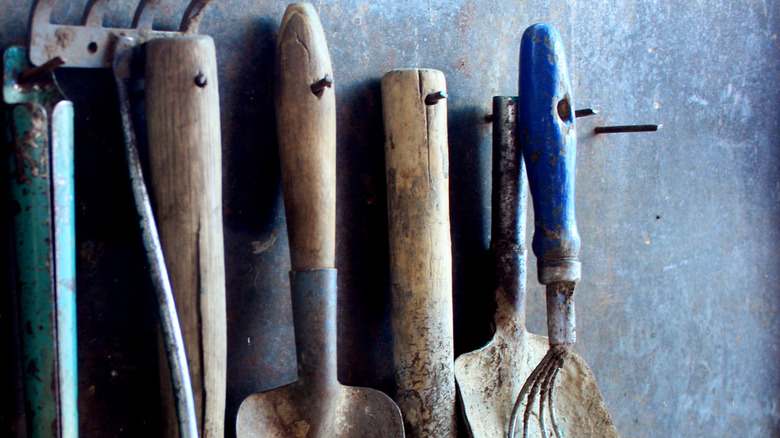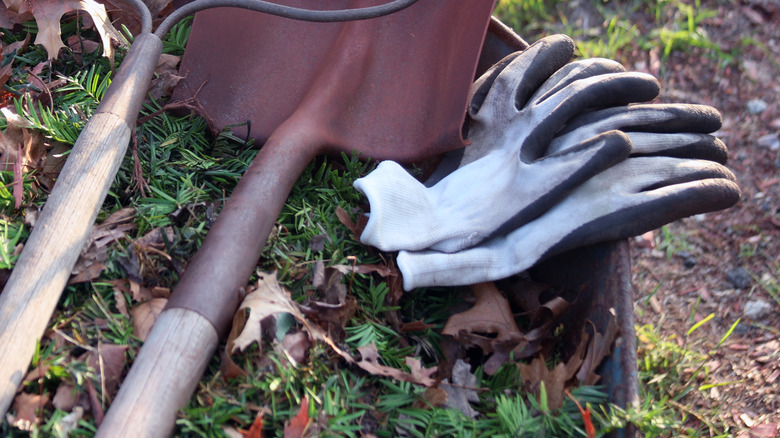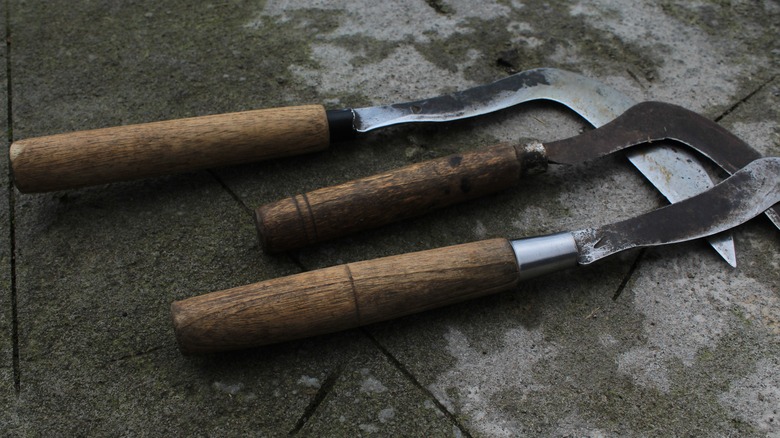Keep Your Wooden Tool Handles Splinter Free With This WD-40 Hack
Gardening tools can be expensive and maintaining them properly is the best way to help them last longer. This is especially true for wood-handled tools, like shovels, rakes, axes, and hoes. Like other natural materials, wood deteriorates with time, but there are ways to keep it supple in order to prevent breaking, cracking, splitting, or splintering. Protecting your wooden-handled tools by spraying them with WD-40 is one of the best ways to make them last longer and prevent damage to the wood, including splintering.
Applying WD-40 to wooden handled tools to prevent wear and splintering is a fast, easy mode of maintenance, and doesn't need to be done often. Be sure to clean off any excess mud and dirt after use, and always store them in a dry place. You may even find yourself willing to invest in better-quality tools if you know you can maintain them in a way that will help them last longer.
Why WD-40 works to protect wood
WD-40 is useful for cleaning and maintaining many things. It's a petroleum product that is known to be effective at preventing rust and corrosion on metal, however, it also protects wood from dirt and moisture. It's also useful for cleaning many wooden items around the home, including furniture, tools, and flooring. It protects the wood by sealing in the its natural moisture, thereby preventing it from drying out, since dry wood is more susceptible to cracking, drying and splintering.
This oily lubricant has a myriad uses, and is a very helpful item to keep on hand for cleaning and protecting all of your gardening tools. Technically, WD-40 is a blend of lubricants, along with ingredients that prevent corrosion and clean away dirt. The initials in the name stand for water displacement which speaks to why it protects so well against moisture damage on metal and wood.
Applying WD-40 to wooden tools to protect them
If your tools are relatively new, you don't need to do any preparation before applying WD-40. if they're older and worn, you may want to gently sand them with a medium-grit sandpaper first, to smooth out any splinters and prime the surface to give the oil something to grip and soak into.
Then spray the wood surface with WD-40, and let it soak in. Fifteen minutes is enough time for it to absorb thoroughly. Then you want to wipe off any excess oil. Use cotton rags or an old towel to wipe off any remaining WD-40. If desired, you can also apply the WD-40 by spraying it onto a rag and rubbing it in, but you have to work quickly before it soaks into the rag.
Be sure to apply the WD-40 after you sharpen your tools, too. This is because metal fragments from sharpening may get trapped in the oil. If you need to wash your tools with soap and water because they're dirty or to remove poison residue or other harmful substances, ensure they dry thoroughly before applying a fresh coating of the lubricant.


